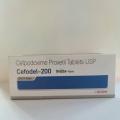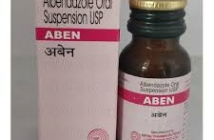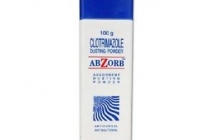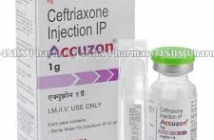Home / Categories / CEFOREX-200MG

CEFOREX-200MG
(10X5)
CEFPODOXIME-200MG
CEPHALOSPORINS
MARK FORMULATION P. LTD.
Product Details
Cefpodoxime Proxetil
A to Z Drug Facts
Cefpodoxime Proxetil
Action
Indications
Contraindications
Route/Dosage
Interactions
Lab Test Interferences
Adverse Reactions
PrecautionsPatient Care Considerations
Administration/Storage
Assessment/Interventions
Patient/Family Education
(SEF-pode-OX-eem PROX-uh-til)VantinClass: Antibiotic/cephalosporin
 Action Inhibits mucopeptide synthesis in bacterial cell wall.
Action Inhibits mucopeptide synthesis in bacterial cell wall.
 Indications Treatment of infections of respiratory tract, urinary tract, skin and skin structures; treatment of sexually transmitted diseases due to susceptible strains of specific microorganisms.
Indications Treatment of infections of respiratory tract, urinary tract, skin and skin structures; treatment of sexually transmitted diseases due to susceptible strains of specific microorganisms.
 Contraindications Hypersensitivity to cephalosporins.
Contraindications Hypersensitivity to cephalosporins.
 Route/Dosage
Route/Dosage
ADULTS: PO 100–400 mg q 12 hr. CHILDREN 6 MO-12 YR: PO 10 mg/kg/day in divided doses q 12 hr (maximum 200 mg/dose).
 Interactions
Interactions
Probenecid: Inhibition of renal excretion of cefpodoxime.
 Lab Test Interferences May cause false-positive urine glucose test results with Benedict's solution, Fehling's solution, or Clinitest tablets but not with enzyme-based tests (eg, Clinistix, Tes-tape); false-positive test results for proteinuria with acid and denaturization-precipitation tests; false-positive direct Coombs' test result in certain patients (eg, those with azotemia); false elevations in urinary 17-ketosteroid values.
Lab Test Interferences May cause false-positive urine glucose test results with Benedict's solution, Fehling's solution, or Clinitest tablets but not with enzyme-based tests (eg, Clinistix, Tes-tape); false-positive test results for proteinuria with acid and denaturization-precipitation tests; false-positive direct Coombs' test result in certain patients (eg, those with azotemia); false elevations in urinary 17-ketosteroid values.
 Adverse Reactions
Adverse Reactions
GI: Nausea; vomiting; diarrhea; anorexia; abdominal pain or cramps; flatulence; colitis, including pseudomembranous colitis. GU: Pyuria; renal dysfunction; dysuria; reversible interstitial nephritis; hematuria; toxic nephropathy. HEMA: Eosinophilia; neutropenia; lymphocytosis; leukocytosis; thrombocytopenia; decreased platelet function; anemia; aplastic anemia; hemorrhage. HEPA: Hepatic dysfunction; abnormal liver function test results. OTHER: Hypersensitivity, including Stevens-Johnson syndrome, erythema multiforme, toxic epidermal necrolysis; serum sickness–like reactions (eg, skin rashes, polyarthritis, arthralgia, fever); candidal overgrowth.
 Precautions
Precautions
Pregnancy: Category B. Lactation: Excreted in breast milk. Children: Consider benefits relative to risks. Safety and efficacy in children < 6 mo not established. Hypersensitivity: Reactions range from mild to life-threatening. Administer drug with caution to penicillin-sensitive patients due to possible cross-reactivity. Pseudomembranous colitis: Should be considered in patients in whom diarrhea develops. Renal impairment: Use drug with caution in patients with renal impairment. Dosage adjustment based on renal function may be required. Superinfection: May result in bacterial or fungal overgrowth of non-susceptible microorganisms.
PATIENT CARE CONSIDERATIONS
 Administration/Storage
Administration/Storage
- Administer with food to enhance absorption.
- Oral suspension must be refrigerated and will remain stable for up to 14 days. Do not freeze. Shake well before use.
 Assessment/Interventions
Assessment/Interventions
- Obtain patient history, including drug history and any known allergies. Note renal impairment and allergy to cephalosporins or penicillins.
- Obtain specimens for culture and sensitivity before beginning therapy and periodically during treatment.
- Monitor renal function carefully during treatment.
- Monitor for signs of infection, especially fever, and for positive response to antibiotic therapy.
- Assess for signs and symptoms of anaphylaxis (shortness of breath, wheezing, laryngeal spasm). Have resuscitation equipment available.
- Assess patient for symptoms of superinfection, vaginitis or stomatitis.
- Assess for diarrhea with blood or pus, which may be symptom of pseudomembranous colitis. Symptoms may occur after antibiotic treatment.
OVERDOSAGE: SIGNS & SYMPTOMS Seizures
 Patient/Family Education
Patient/Family Education
- Instruct patient to complete full course of therapy.
- Advise patient to take with food to enhance absorption.
- Remind patient to check body temperature daily. If fever persists for more than a few days or if high fever (> 102°F) or shaking chills are noted, physician should be notified immediately.
- Advise patient to maintain normal fluid intake while using this medication.
- Advise diabetic patient to use enzyme-based tests (eg, Clinistix, Testape) for monitoring urine glucose because drug may give false results with other tests.
- Instruct patient to report these symptoms to physician: nausea, vomiting, diarrhea, skin rash, hives, muscle or joint pain.
- Instruct patient to report signs of superinfection: black “furry” tongue, white patches in mouth, foul-smelling stools, vaginal itching or discharge.
- Warn patient that diarrhea that contains blood or pus may be a sign of serious disorders. Tell patient to seek medical care and not to treat at home.
- Instruct patient to seek emergency care immediately if wheezing or difficulty breathing occurs.
Books@Ovid
Copyright © 2003 Facts and Comparisons
David S. Tatro
A to Z Drug Facts





